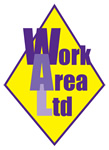A lot of people just sit in silence and make do with the chair that they are given to use in their place of work.
Employers need to be able to spot the signs that suggest seating is uncomfortable. For example, some people may use a cushion on their office chair, or use a makeshift footrest if working on a higher level bench such as in a laboratory or factory. Sometimes simply asking employees if their seat is comfortable is enough to assess whether a problem exists. But how many employers actually do ask that question? And equally, how many employees would give an honest answer?
It is therefore better for employers to take the initiative by providing suitable seating, and not wait until complaints are received or until workers take time off with back pain. Employees also need to play their part by telling their employers or those responsible for health and safety, if seating is unsuitable or unsafe. After all it is the duty of the employer to provide seating fit and suitable for purpose.
Some basic steps:
- Ensure chairs are adjusted to suit each user, for example the seat height and/or backrest position should allow the user to comfortably and safely carry out their work.
- Ensure that the backrest is used to support the back and that the worker is not perched on the edge of the seat.
- Supply a footrest if workers’ feet cannot touch the ground
- Provide seats with or without armrests, depending on which option is more comfortable for the worker.
- Encourage workers to take adequate rest breaks or rotate tasks if the seating or the workstation does not allow for movement.
- Change the seating design and/or workstation if, after a risk assessment, one or both are found to be unsuitable or unsafe.
- Maintain seating so that it is adequately clean, the upholstery is in good condition and the adjustment mechanisms work properl
Remember !
it’s your chair and your back– if you aren’t sitting comfortably please do something about it.

